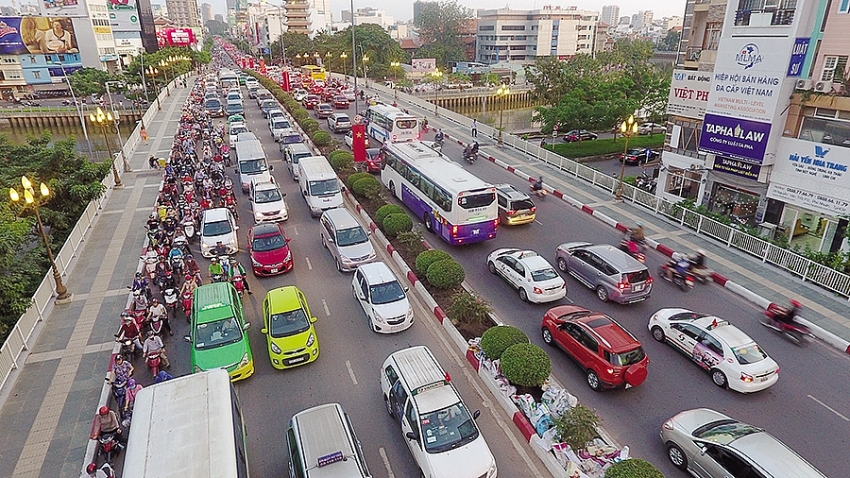Transport survey outlines future cash conditions
 |
| Transportation in urban centres is expected to come under increased strain from a rapidly rising population Photo: Le Toan |
Visa, the world’s leader in digital payments, along with Stanford University have launched a study on the future of transportation to better understand the challenges commuters face today.
Building on Visa’s experience working with transit operators, automotive companies and technology start-ups, the study examines the growing demand for public and private transportation, and the important role that digital commerce plays in driving sustainable growth.
“The future success of our cities is intertwined with, and reliant on, the future of transportation and mobility. Visa and our partners have an important role to play, both in streamlining the payment experience for millions of commuters around the globe, and supporting public transportation authorities in their quest to build sustainable and convenient transportation solutions that improve the lives of the people who use it,” explains Mike Lemberger, Visa’s European head of Product and Solutions.
The study, which reflects the feedback of 19,000 consumers across 19 countries and identifies significant challenges faced by growing urban centres, finds that 46 per cent of consumers globally have seen commuting times increase, half (52 per cent) are frustrated with the experience of using public transport, and one third of those surveyed (37 per cent) expect that their commuting time will increase over the next five years.
According to the study, complexity in payment is often at the root of many common complaints. Accordingly, if it was easier to pay for public transport, average use would increase by 27 per cent, 44 per cent said not knowing how much to pay is a problem. Some 41 per cent cited services being cash-only as an annoyance. According to those surveyed, these frustrations make them less likely to use public transport and more likely to drive their own cars.
To solve the issue, Visa is recommending that city governments invest in an “always on” data infrastructure, which is fundamental to the technology solutions that consumers demand. It supports real-time data exchange that can inform people about their journey as well as provide insight for cities to ensure that services meet shifting demand.
They should also create a seamless payment experience to support commuter journeys with multiple legs. City governments and urban planners need to collaborate with think tanks, automotive and technology firms, and payments providers such as Visa.
Furthermore, as companies and municipalities increasingly incorporate digital payments, they also need to integrate instant authentication. Designing commerce systems with all members of society in mind and developing strategic partnerships to drive insights are also the other solutions.
According to the United Nations, by 2050, 68 per cent of the world’s population will live in urban centres, and the number of megacities with populations greater than 10 million people will rise from 43 today to 51 within that same period. This is expected to cause pressure on transportation.
Payments lie at the heart of every form of travel, and will continue to become more integral as more cities move to contactless public transportation, digital payments for parking, and rental services such as bikes or scooters, according to the study.
What the stars mean:
★ Poor ★ ★ Promising ★★★ Good ★★★★ Very good ★★★★★ Exceptional
Related Contents
Latest News
More News
- Tax sector wraps up 2025 and sets priorities for next year (December 25, 2025 | 14:00)
- A tipping point for digital and hybrid wealth management in Vietnam (December 23, 2025 | 13:33)
- $250 million deal targets women-owned SMEs, sustainable agriculture (December 22, 2025 | 17:40)
- Stock market posts resilient 2025 performance (December 19, 2025 | 18:17)
- Citi Vietnam receives 2025 AmCham CSR recognition (December 19, 2025 | 16:35)
- As global green supply chain reshapes, will Vietnam be left behind? (December 19, 2025 | 08:00)
- Banks gear up for massive capital increases (December 18, 2025 | 17:04)
- Securing capital and efficiency for Vietnam’s 2026-2030 growth ambitions (December 17, 2025 | 10:00)
- Energy sector in need of blended finance mechanisms (December 17, 2025 | 09:00)
- Vietnam still has room to mobilise capital for sustainable growth (December 17, 2025 | 08:57)

 Tag:
Tag:





















 Mobile Version
Mobile Version